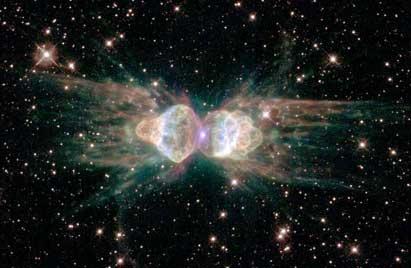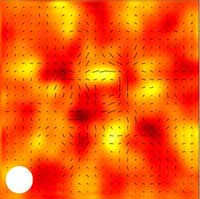The background radiation of the universe is polarized

From 18 to 21 September the congress on cosmology Cosmo-02 was held in Chicago. Some cosmologists have brought to light, among others, the latest results of background radiation research, a polarized microwave radiation that has generated a new opportunity to study the origin of the universe.

These cosmologists have made measurements using a microwave telescope located at the South Pole, the Degree Angular Scale Interferometer (DASI) telescope. The first atoms were formed when the universe was only 400,000 years old. Microwave background radiation has been in the universe ever since, so by analyzing its characteristics, you can investigate how the universe was formed. Thus, in the last two years, the most spectacular results have been obtained. On the one hand, the amount of matter and energy in the universe has been calculated and, on the other, it has been known that the 'aspect' of the universe is flat.
The polarity is the orientation of the waves of radiation, data from which it can be known that in the first years of the universe matter had a movement of agitation, that is, it was moving in whirlpools. Polarity is, therefore, the current footprint of these movements, and the work of cosmologists is to follow that footprint of the processes that occurred.
The main doubt of this work was whether strange waves could exist or not. Scientists have taken great care to know if there are 'modern' contributions to that background radiation. If so, what is observed through the telescope would not reflect that initial situation, but rather the mixture of a lot of features that cannot be predicted. The signal received is very weak, but scientists estimate that it has no other source.
Buletina
Bidali zure helbide elektronikoa eta jaso asteroko buletina zure sarrera-ontzian











